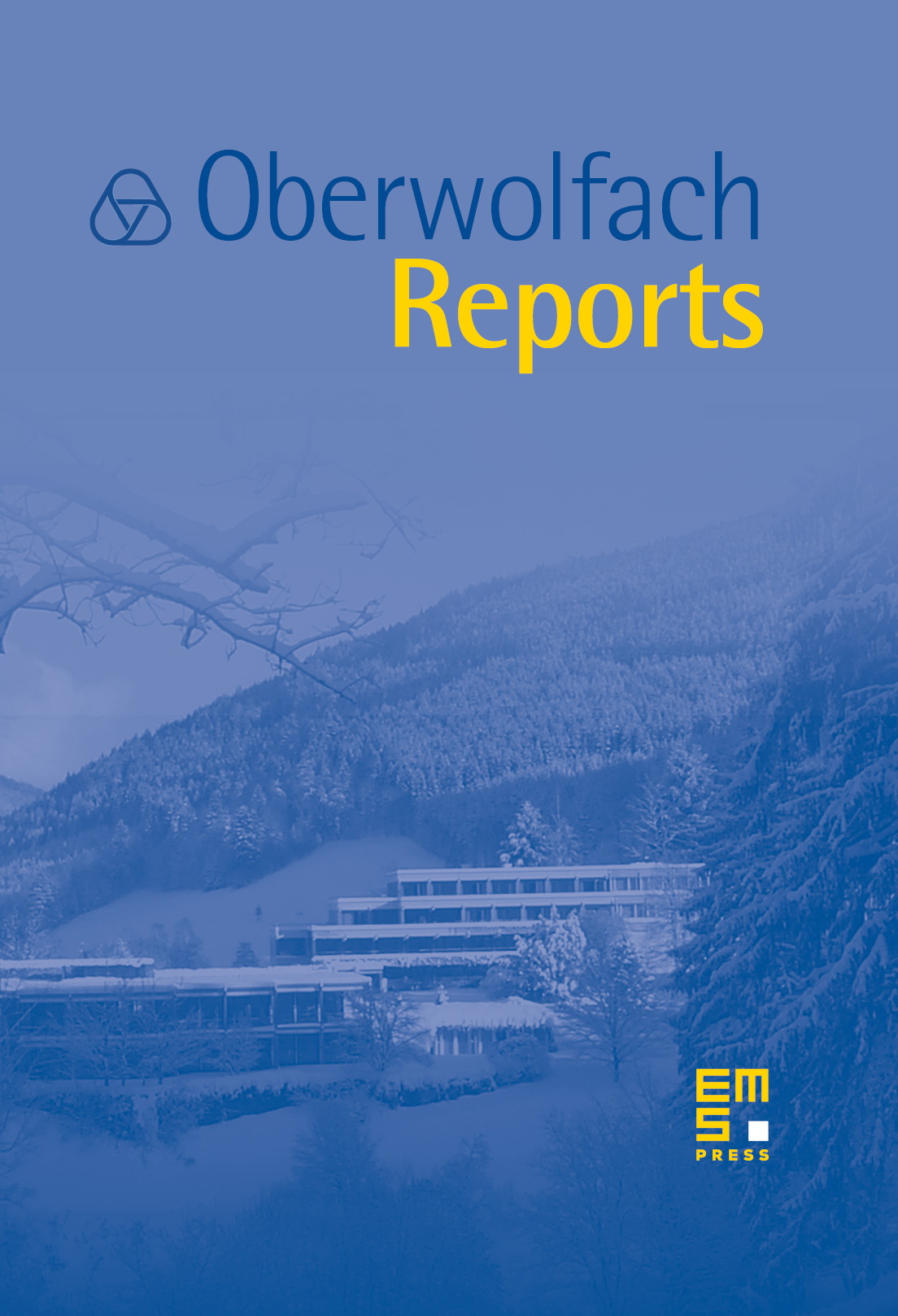Model Theory and Groups
Andreas Baudisch
Humboldt-Universität zu Berlin, GermanyDavid Marker
University of Illinois at Chicago, USAKatrin Tent
Universität Münster, GermanyFrank Olaf Wagner
Université Claude Bernard Lyon 1, Villeurbanne, France

Abstract
The workshop Model Theory and Groups, organised by Andreas Baudisch (Berlin), David Marker (Chicago), Katrin Tent (Bielefeld) and Frank Wagner (Lyon) was held January 14th–20th, 2007. This meeting focused on interactions between classical model theoretic investigations of groups and their applications to geometric group theory and vice versa. It was well attended with 55 scientists, both model theorists as well as geometric group theorists, including women and a relatively large number of young researchers and students. Needless to say that participants came from a broad geographical background.
For many years groups have played a central role in model theory, both in applied model theory where one is focused on understanding algebraic structures and, more surprisingly, in pure model theory where one is studying structures from an abstract viewpoint.
At first, only the most basic tools from the general theory were needed in applications, but, over the last ten years, some of the most sophisticated ideas from pure model theory have played an important role in applications, most notably Hrushovski's proof of the Mordell–Lang Conjecture for function fields. The investigation of variations of Mordell–Lang like theorems in different situations played an important role in a number of talks.
Geometric group theory and model theory have started interacting in the context of free groups and surface groups as well as in the study of the asymptotic behaviour of geometric properties on groups. This was a second main topic of the conference which particularly profited from the fact that researchers from different areas attended the meeting and presented their results.
At the core of model theoretic investigations of groups were the reports on groups of finite Morley rank around the Cherlin–Zilber Conjecture which states that every simple group of finite Morley rank is an algebraic group over an algebraically closed field. While originally attempts at proving this conjecture have followed the lines for the classification of algebraic groups, more recent advances have been made by adapting and generalising ideas from the classification of finite simple groups, in particular the study of the 2-Sylow subgroup, which has allowed a distinction into three cases: even characteristic, odd characteristic (including ) and degenerate (no involutions). The even case is solved, and important progress has been made in the other cases. The recent construction of so-called bad fields, i.e. fields of finite Morley rank with a distinguished multiplicative subgroup also added new impetus to the search for new proofs not involving assumptions on the non-existence of such fields.
The organisers asked Dugald Macpherson and Charles Steinhorn before the conference to give a three-lecture tutorial on asymptotic classes and measurable structures. This is a new development in model theory generalising results on finite and pseudofinite fields. In addition, 27 participants were invited to report on their research (18 long and 9 short talks).
Altogether it was a very successful workshop which inspired a number of new cooperations and further projects. The reader may find here extended abstracts of all talks (in the order in which the talks were given).
Cite this article
Andreas Baudisch, David Marker, Katrin Tent, Frank Olaf Wagner, Model Theory and Groups. Oberwolfach Rep. 4 (2007), no. 1, pp. 83–138
DOI 10.4171/OWR/2007/02